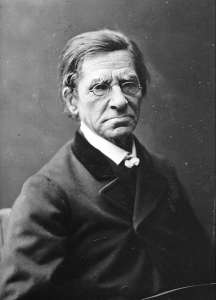Mad Scientist’s Guide is mad indeed! A review by Stanwix von Stuffypants

Professor Stanwix von Stuffpants
I must confess to having been dubious concerning the “merits” of this so-called Mad-Scientist’s Guide to Composition from the moment I first espied its advertisement in the solemn pages of Canonical Literature quarterly; however, because I pride myself on staying abreast of what passes for “pedagogy” these days, not to mention what the youth are “into,” I decided to pick up a copy, despite the fact that I usually disdain anything in “paperback.” As I am wont to do, I settled into the leather chair in my study with an aperitif to peruse its pages, only to choke on my amontillado.
This “Mad Scientist’s Guide” is an outrage. An outrage, I say! The central premise of the guide is apparently the wholly misguided and, indeed, pernicious conception that writing should be fun. Fun? Nothing could be further from the truth. Writing is not and should never be “fun.” Writing is, rather, a sacred endeavor—and its seriousness must be impressed upon students through the diagramming of sentences, lectures on grammar, and the memorization of classical rhetorical figures.
The faultiness of this guiding principle that “writing should be fun” is then exacerbated by the substitution of so-called experiments for traditional writing assignments and the invitation for students to pursue topics that interest them. How absurd! How can students be expected to achieve their full potential if the significance of the essay is not strongly and repeatedly impressed upon them? And we should not be teaching our students to revise, but to get it right the first time.
This brings us to the final error of this so-called “Guide,” which is the error of poor taste. The author of this “guide,” Dr. Jeffrey Andrew Weinstock, seems wholly bereft of the ability to distinguish between good and bad. No doubt a heathen who prefers “rock” music to opera, Dr. Weinstock has irresponsibly chosen to populate the pages of this “guide” with references to “monsters,” “zombies,” “ghouls,” “mad scientists,” and the like, while also adopting a casual tone. As we all know, “popular culture” has no place in higher education; children instead must be guided with a firm hand toward classical texts and intellectual topics inclined to inculcate good graces and moral virtues, not left to their own devices to get caught up in the low-brow thickets of B-movies and penny dreadfuls!
Only someone sharing Dr. Weinstock’s mad ideas that writing should be fun and that popular culture has a place in pedagogy could possibly find anything of value in The Mad Scientist’s Guide to Composition.
–Professor Stanwix von Stuffypants
